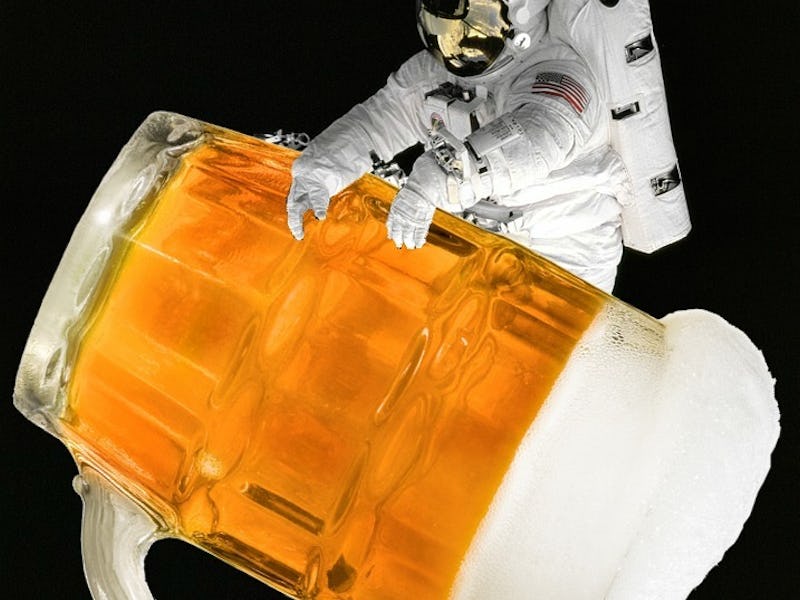There’s a reason astronauts don’t toast with frothy brews in space: Beer is pretty much impossible to drink in zero gravity.
The laws of physics prevent Earth’s most beloved alcoholic beverage from transcending the planet’s outer bounds because they don’t permit bubbles to exist in space. Unfortunately, one of the most critical parts of the beer brewing process is the carbonation phase — without it, you have nothing but flat, non-fermented juice. The bubbles in your beer are created through this process using a combination of sugar and yeast. The more sugar to yeast, the more bubbles are produced But in a zero-gravity environment, those bubbles won’t rise.
As NASA explains, the “bubbles of carbon dioxide in carbonated beverages aren’t buoyant in a weightless environment, so they remain randomly distributed throughout the fluid, even after swallowing.”
Not only will the beer not brew properly in space — it won’t even be digestible. Just as bubbles rise in a cup, they also rise in your stomach, producing gas and, consequently, burping contests across Earth-bound frat houses.
But in space, things don’t rise — they float. That’s why astronauts don’t typically burp in zero gravity; instead of rising out through their mouths, the gas in astronauts’ bellies stays stuck and can be very uncomfortable. If an astronaut drinks beer in space, the carbonation will escape in the same way as acid reflux, producing “wet burps”, along with some of the liquid.
So, what is a beer-loving spacefarer to do? Hope comes in the form of a group of engineering students at the University of California San Diego that is developing a pilot program for growing yeast in space. Ultimately, they hope to make any product that uses yeast — including beer — a viable option for moon dwellers one day. The group must out-compete 24 other groups for the Lab2Moon Competition, which aims to include a youth experiment on the Team Indus spacecraft, launching in December 2017.
The group’s plan is to have a containment system the size of a soda can with three different compartments. The first holds the unfermented beer, the second (which will open once Team Indus has landed on the moon) combines the beer with the yeast, and the third allows the beer to sink to the bottom and separate from the yeast. The system will make for a bubbly beer, but the problem still remains: How on Earth (or Mars) is anyone going to drink it?
